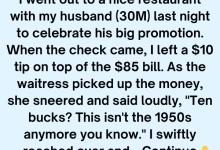When you decide to prolong the useful life of objects that you thought were useless, you not only contribute to the planet’s health, you also save resources that you could use for other things. Making useful things out of household items ends up being a lot cheaper.
Here are awesome ideas you should know:
Coffee

Old coffee grounds have innumerable uses. From personal hygiene to gardening, we’ll present various uses in this article to give your coffee grounds a second life.
Coffee grounds are an excellent air freshener to remove bad odors. If you scrub your hands with them, you’ll eliminate dead skin cells. Plus, if you use them to clean the fridge and kitchen surfaces, they’ll end up shining. They’re also good for degreasing pots and, mixed with hot water, they help to keep your sink unclogged.
Give any of these uses a try!
Reusable materials: The toothbrush

Who hasn’t thrown out their old toothbrush when they feel like it’s no longer effective for brushing your teeth?
This utensil is still useful for cleaning long after you stop brushing your teeth with it. For example, you can use your toothbrush to clean those tough-to-clean areas of the bathroom. Plus, it’s also great for cleaning your shoes.
Cans for different purposes
After enjoying a delicious soda or a tasty snack we normally throw out the drink cans. In doing so, we lose a valuable resource that we could use to make many functional objects for the house.
How can you use these cans?
Vases, pencil holders, or decorative planters are all fun ideas for things to make with that pile of cans you have. The tabs from the lids are very useful for jewelry making. If you connect them with ribbon, string, or staples, you can make decorative bangles and bracelets.
Toilet paper tubes

Throwing out toilet paper tubes is more a loss than a benefit.
Toilet paper tubes have many uses in your home once they’ve finished their original purpose. From funny dolls to containers to store small objects, you can make many things with this reusable material.
Magazines, newspapers, and reusable materials

They’re normally in a corner, on a table, or in some closet. Magazines, newspapers, and pamphlets only accumulate dust while they turn into a nuisance.
However, you can use them to make crafts with your little ones. Christmas decorations, flowers, wrapping paper, confetti, or garlands, can all be made with these reusable materials that tend to build up in your house.
Newspapers are great for wrapping fragile objects, ripening vegetables and fruits, and even for drying and widening your shoes. It’s an interesting material with a wide variety of uses.
Stale bread

Among the many uses of stale bread, it’s important to highlight its usefulness in making delicious meals. As long as it isn’t wet, stale bread can be reused for different meals, such as soups, salads, or as a base for delicious canapés.
It’s also useful to get rid of bad smells from the refrigerator. After cleaning the fridge well, if it still has a bad smell, put a piece of stale bread in it to absorb the odors.
Teabags: Aesthetic, medicinal, and disinfectant uses
There are many things you can use tea bags for after you make a delicious pot of tea. For example, you can use their anti-inflammatory properties to apply them topically on a rash or breakout or to reduce eye inflammation.
Another of its uses is to dye your gray hairs or reinforce vegetable dyes. In the refrigerator, they’re powerful odor-absorbers. Without the bag, the leaves can fertilize plants.
Recycling: An excellent option

In practice, if you want to get rid of all of the reusable materials that tend to accumulate in your house, you can also choose to recycle. Once you identify your local recycling facility, you just have to throw them into the correct receptacles.
- The blue boxes are used for paper and cardboard, as long as they don’t have any food residues or other substances.
- In the green one, you can put glass objects, and food waste goes in the brown one.
- Yellow containers are for plastic and cans and biodegradable material goes in the gray ones.
(Note: these colors and instructions may vary by country or region, please consult your local recycling plant and follow their rules for recycling.)
Overall, these eight reusable materials that normally build up in your house can turn into savings for you. With creativity and patience, you’ll be able to make useful objects without making big investments.







